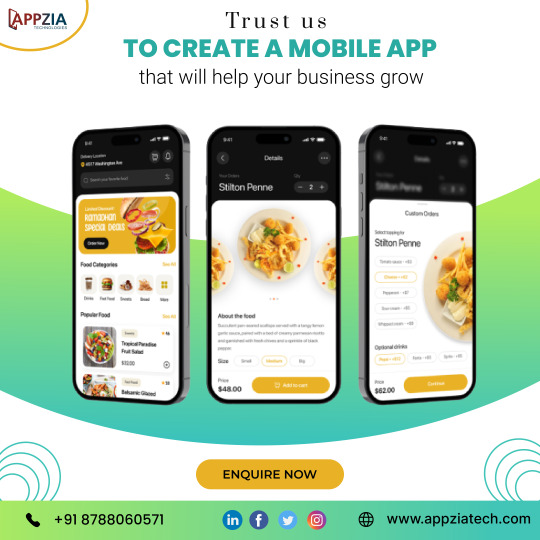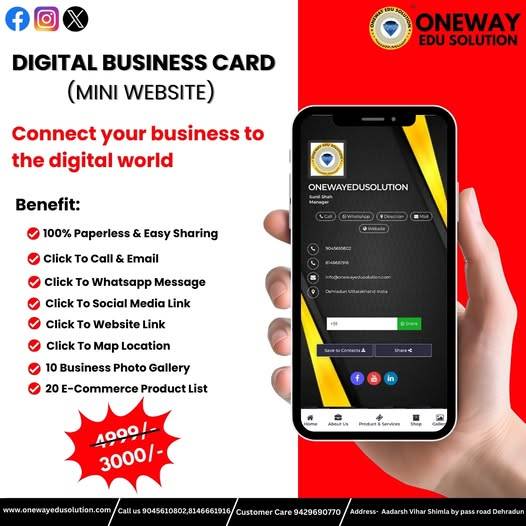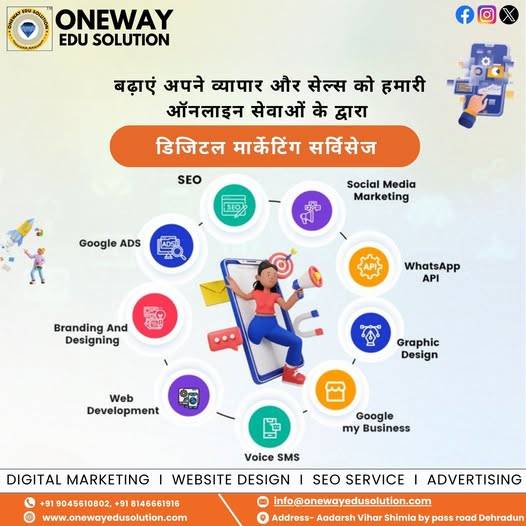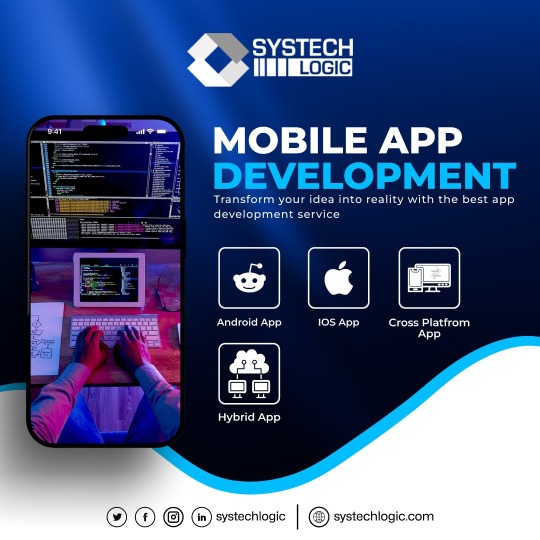#Mobile Application
Explore tagged Tumblr posts
Text
Does anyone know why I'm not getting notifications for certain blogs?
Two blogs I follow, @wolfesona and @shurikensgang, recently got deleted and recreated by their owner. I immediately followed the two blogs and set notifications on.
For whatever reason, though, I don't receive any notifications from either blog's interactions with my blogs. I did before they got deleted, but now I get mobile push notifications for everything they do that isn't related to me. I get one when they upload a post or reblog a post, but I get nothing when they reply to my comment or reblog my post.
Does anybody on the site have an idea as to what's happening? I'd really like to be notified again.
7 notes
·
View notes
Text
The Best Way to Get Started with Web Development
In an age where everything seems to be online, from shopping to socializing, learning web development is a smart move. Whether you’re aiming for a career change or simply want to enhance your skill set, diving into web development can be both exciting and rewarding.

#bsjtechnology#business#technology#marketing#web development#software#smart phones#mobile application#services#android app development
2 notes
·
View notes
Text
Mobile App Maintenance: Best Practices for Long-Term Success
In the frenetic world of digital technology that we live in today, mobile applications have become an indispensable component of our routines. The way in which we engage with technology has been fundamentally altered by the proliferation of mobile applications, which can serve a variety of purposes, including communication, entertainment, and productivity. However, releasing an app is only the first step in a long and winding road. Effective maintenance procedures are absolutely necessary if you want to continue to see success with your app and keep your users happy.
In this blog post, we will discuss the most effective strategies and procedures for keeping your mobile app functioning effectively while also ensuring its safety and keeping it up to date. We will walk you through the necessary processes, such as monitoring performance, managing updates, and responding to user feedback, so that your mobile app may achieve sustained success over the long run. Now that we have everything out of the way, let's dive in and find out how to maintain your app like a pro.
What is Mobile App Maintenance?
Mobile app upkeep is the ongoing process of managing and improving a mobile app after it has been built and put into use for the first time. It means keeping an eye on, changing, and improving the app to make sure it works well and that users are happy with it. Mobile app maintenance includes things like fixing bugs, fixing security holes, adding new features or functions, improving the user design and experience, and adapting the app to new mobile platforms and operating systems as they come out. Regular maintenance is important to keep the app up-to-date, safe, and compatible with the latest devices and software updates so that users can have a smooth and enjoyable experience.
It also makes it easier to find and fix any problems or technical glitches quickly, which can stop them from affecting user involvement or business goals in a bad way. By spending money on mobile app maintenance, creators can make sure that their apps will last and be successful in the fast-paced and competitive mobile app market.
Best Practices for Mobile App Maintenance
1. Regular Updates
Regular updates are important for mobile app maintenance. In the world of technology, which is always changing, updates make sure that mobile apps work with the most recent running systems, devices, and security protocols. Not only do these updates fix any bugs or glitches in the app, but they also add new features, improvements, and additions based on user feedback and market trends. Regular updates help keep the app safe, secure, and well-optimized, which makes it easier for users to use and reduces the chance of crashes or other problems. Also, updates let developers deal with new security risks and holes, keeping user data safe and secure.
2. Bug Monitoring & Fixing
Monitoring and solving bugs are two of the most important best practices for maintaining mobile apps. Bugs, glitches, and crashes can make it hard for people to use an app and hurt its image. To make sure the app works well, the people who made it need a strong method for finding and fixing bugs. This includes testing and keeping an eye on the app so that any problems can be found and fixed. Developers must make it a priority to fix major bugs as soon as possible so that users don't have to deal with any problems with how the app works. Developers should also use best practices for coding and testing tools to make it less likely that bugs will happen in the first place.
3. Performance Optimization
One of the most important best practices for mobile app upkeep is performance optimization. Users want fast and responsive apps in the fast-paced digital world of today. Performance problems can make users angry, make them less happy with the app, and even cause them to stop using it. To make sure the app works as well as possible, writers need to regularly look at and improve different parts of it. This includes simplifying the code, using as few resources as possible, and making the network work better. By putting performance optimization at the top of their list for mobile app maintenance, developers can give users a smooth and enjoyable experience, increase app engagement, and stay ahead of the competition in the very competitive app market.
4. Security Updates
Updates that improve security are an important best practice for maintaining mobile apps. With cyber threats happening more often and getting smarter, making sure mobile apps are safe is of the greatest importance. Regular security updates help protect user data, stop illegal access, and close security holes that could be used by bad people. Developers should stay up to date on the latest security standards and best practices, and they should fix any security holes or flaws as soon as they are found. This includes using encryption, putting in place safe methods of authentication, and doing regular security audits.
5. Compatibility & Device Testing
Mobile app maintenance best practices include testing for compatibility and trying on different devices. With so many different devices, running systems, and screen sizes on the market, it's important that the app works well on all of them. Developers should do thorough compatibility testing to make sure the app works well on different devices and versions of the operating system. This includes testing on different screen sizes, resolutions, and hardware setups to ensure a uniform user experience. By testing on different devices, developers can find and fix layout problems, bugs in the user interface, and differences in how the app works on different devices.
6. User Feedback and Support
User feedback and help are two important best practices for mobile app maintenance. Users are often the best source of feedback and suggestions for making an app work better and make the user experience better. Users can give feedback, report problems, and make improvements when a good feedback system is in place. Monitoring and analyzing user comments regularly helps identify bugs, issues, and feature requests.. Customer service that is quick and helpful is also important for keeping users happy. It means responding quickly to user questions, fixing problems, and helping users when they need it.
7. App Store Optimization (ASO)
App Store Optimization (ASO) is one of the most important maintenance best practices for mobile apps. ASO includes improving the visibility, discoverability, and conversion rates of an app by tweaking different parts of its listing in app stores. This includes making sure the app's title, keywords, description, and screenshots match up with relevant search queries and draw potential users. Metrics from the app store, such as downloads, scores, and reviews, can give you an idea of what users like and help you find places to improve. By optimizing the app's appearance in the app store on a regular basis, developers can increase the app's chances of being found, improve its conversion rate, and bring in more engaged users.
Wrapping Up
Mobile app maintenance is an ongoing process that makes sure your app will be successful in the long run and that users will be happy with it. By following these best practices, such as regular updates, bug monitoring and fixing, speed optimization, security updates, compatibility testing, user feedback and support, monitoring analytics, and app store optimization, you can keep your app up-to-date, safe, and easy to use. App maintenance is an important part of your general mobile app strategy, and you should always try to give your users a great experience.
3 notes
·
View notes
Text
What’s your favorite 80s TV Series? (USA/Family)
WE PRESENT YOUR APP!
App Store: https://apps.apple.com/us/app/favoritan-just-favorites/id1542984479
Google Play: https://play.google.com/store/apps/details?id=com.favoritan.favorites
YouTube Channel: https://www.youtube.com/Favoritan
#Favoritan #Mobile #App #FavoritanApp #Favorite #Favourite #TVseries
#Favoritan#Mobile#App#Application#Mobile App#Mobile Application#Favoritan App#Favoritan Application#Favorite#Favorites#Favourite#Favourites#TV Series#80s Theme
2 notes
·
View notes
Text

Unlock the Potential of Your Business with Our Custom Mobile Apps - Build the Future of Your Success!
6 notes
·
View notes
Text

Is your next million-dollar idea just a fleeting thought? Your ideas are too brilliant to forget. Keep them safe and organized with the Idea List app! App Link: aptechbiz.com/apps/idea-list
#ideas#ideamanagement#productivityboost#productivitytools#innovative#taskmaster#task management#app#mobile#mobile application#productivity
0 notes
Text
The Impact of Mobile Applications on Local Businesses
In today’s digital era, mobile applications have revolutionized the way businesses operate, especially at the local level. From enhancing customer engagement to streamlining operations, mobile apps have become indispensable for small and medium-sized businesses. With consumers spending an increasing amount of time on their smartphones, local businesses that embrace mobile technology gain a competitive edge, driving growth and improving customer satisfaction.
Enhancing Customer Engagement
One of the most significant impacts of mobile applications on local businesses is their ability to enhance customer engagement. With a mobile app, businesses can stay connected with their customers 24/7, sending push notifications about new products, discounts, and promotions.
For instance, a local coffee shop can use its mobile app to offer loyalty rewards, notify customers about special offers, and enable mobile ordering. This not only fosters customer loyalty but also improves overall sales. Customers are more likely to engage with a business that provides seamless and personalized experiences through an app development.
Improving Brand Visibility and Recognition
A well-designed mobile application helps in improving brand visibility. With an app icon on a user’s smartphone, businesses are constantly present in the daily lives of consumers. Unlike websites, which require users to open a browser and search for a business, mobile apps are just a tap away. This ease of access increases brand recall and keeps customers engaged.
Additionally, businesses can integrate their mobile apps with social media, allowing users to share their experiences, leave reviews, and promote the business within their networks. This organic marketing boosts brand recognition and attracts new customers.
Boosting Sales and Revenue
Mobile applications significantly contribute to increased sales and revenue. With features like in-app purchases, easy payment options, and personalized recommendations, businesses can encourage more transactions.
For example, a local restaurant can enable online ordering and payment through its app, making it more convenient for customers to place orders. By offering personalized promotions based on customer preferences, businesses can further drive repeat purchases. The ability to integrate mobile payment systems such as Apple Pay, Google Pay, or PayPal simplifies transactions, enhancing the overall shopping experience.
Providing Valuable Customer Insights
Mobile applications generate valuable customer data that can be used to refine business strategies. Businesses can track user behavior, preferences, and purchase history to tailor their offerings accordingly. This data-driven approach helps in creating targeted marketing campaigns that resonate with customers.
For instance, a retail store can analyze which products are frequently viewed or purchased through the app and adjust inventory accordingly. By understanding customer preferences, businesses can offer personalized recommendations, leading to higher customer satisfaction and retention.
Enhancing Customer Support and Communication
Customer service is a crucial aspect of any business, and mobile applications have made it easier for businesses to provide efficient support. Features like chatbots, live chat, and FAQs enable customers to get instant assistance without having to visit a store or make a phone call.
For instance, a local repair service provider can allow customers to book appointments, track service progress, and communicate with support staff through an app. This not only improves customer experience but also streamlines operations, reducing the need for manual intervention.
Encouraging Customer Loyalty
Loyalty programs integrated into mobile apps are highly effective in retaining customers. Businesses can reward repeat customers with discounts, exclusive offers, or points that can be redeemed for future purchases.
For example, a local salon can offer points for every booking made through the app, encouraging customers to return. This not only fosters customer loyalty but also increases the lifetime value of each customer.
Streamlining Operations
Beyond customer engagement, mobile apps also help businesses streamline their internal operations. Many local businesses use mobile applications for inventory management, appointment scheduling, and employee coordination.
A small business, such as a boutique or a home-service provider, can use an app to manage appointments, send reminders, and track inventory levels in real time. This automation reduces human errors, increases efficiency, and saves time, allowing business owners to focus on growth and customer satisfaction.
Staying Ahead of Competitors
In a highly competitive market, having a mobile application gives local businesses a distinct advantage over competitors that rely solely on traditional methods. A mobile app sets a business apart by offering convenience, accessibility, and a personalized experience.
For example, if two similar local grocery stores exist, the one offering an app with home delivery, digital coupons, and easy payment options will likely attract more customers. Consumers today prioritize convenience, and businesses that adapt to these changing preferences are more likely to thrive.
Austin App Development: Transforming Local Businesses
Austin app development has played a crucial role in helping local businesses leverage mobile technology for growth. With Austin’s thriving tech scene, many businesses are investing in custom mobile applications to improve customer experience, enhance brand recognition, and streamline operations. Whether it’s a restaurant offering a seamless ordering system or a retail store integrating loyalty programs, mobile apps are reshaping the way businesses operate in Austin.
Conclusion
The impact of mobile applications on local businesses is undeniable. From enhancing customer engagement and boosting sales to improving brand visibility and streamlining operations, mobile apps have transformed the way local businesses function. In an increasingly digital world, adopting mobile technology is no longer an option but a necessity for businesses looking to grow and stay competitive.
Local businesses that invest in a well-designed, user-friendly mobile application can build stronger relationships with customers, increase revenue, and position themselves for long-term success. As technology continues to evolve, the role of mobile apps in shaping the future of local businesses will only grow stronger. Now is the time for local businesses to embrace mobile applications and harness their full potential.
1 note
·
View note
Text
Mobile Application Development Partner for Your Business
Get best Mobile Application Development Partner for Your Business by Solve IT Technologies. It allows a wider audience reach through direct contact with the customer. Greater involvement and personalization, resulting in building loyalty. Moreover, it increases revenue: sales through in-app purchase offers. Gain a competitive edge: innovate and stand out in your industry.
0 notes
Text
Tejomaya Oneway Innovation LLP | The Best IT Company in Dehradun

Tejomaya Oneway Innovation LLP stands as one of the best IT companies in Dehradun, offering cutting-edge technology solutions to businesses of all sizes. We specialize in a wide array of IT services, ranging from software development and website design to digital marketing and cloud computing. Our expertise and commitment to quality have helped numerous clients across industries enhance their operations and achieve their business goals. At Tejomaya, we are driven by innovation, passion, and a customer-first approach, ensuring that every project we undertake is executed with precision and excellence.
Why Tejomaya Oneway Innovation LLP Is the Best IT Company in Dehradun
Choosing the right IT company is crucial for the success of any project. Tejomaya Oneway Innovation LLP is proud to be recognized as a leading IT company in Dehradun, and here’s why:
Expertise in Cutting-Edge Technologies: We offer comprehensive IT solutions that leverage the latest technologies, ensuring that our clients are always ahead of the curve. From web and mobile app development to artificial intelligence and blockchain, we stay updated with the latest trends to provide you with the best solutions.
Customized Solutions for Every Client: We understand that every business is unique. That’s why we offer tailored IT services that align with your specific needs and objectives. Whether you need software development, cloud services, or IT consulting, we provide solutions that are designed to fit your requirements perfectly.
Proven Track Record: With years of experience in the IT industry, we have successfully delivered numerous projects for clients across various sectors. Our portfolio speaks for itself, showcasing our expertise and our ability to deliver high-quality results on time and within budget.
Customer-Centric Approach: At Tejomaya, we prioritize our clients' satisfaction above all else. We work closely with you throughout the project lifecycle to ensure that your vision is realized. Our team is always available to provide support, guidance, and updates, ensuring a seamless experience for you.
Our Services: Comprehensive IT Solutions for Every Business
As the best software company in Dehradun, we offer a wide range of services to meet the needs of our diverse clientele:
Software Development: We specialize in building custom software solutions that enhance operational efficiency. Whether you need enterprise software, CRM systems, or custom applications, our team of developers ensures that your software is scalable, secure, and user-friendly.
Web Development & Design: A well-designed website is essential for any business in the digital age. Our web development services include designing and developing responsive websites that are optimized for all devices. We focus on user experience, speed, and functionality to ensure that your website drives conversions.
Mobile App Development: With the growing use of smartphones, having a mobile app is essential for many businesses. Our mobile app development team builds intuitive, feature-rich apps for iOS and Android platforms, helping you reach a wider audience and offer an enhanced customer experience.
Digital Marketing Services: As part of our IT services, we also provide digital marketing solutions that help you grow your online presence. From SEO and social media marketing to Google Ads and email campaigns, our digital marketing strategies are designed to attract traffic, increase engagement, and drive conversions.
Cloud Computing Solutions: In today’s fast-paced world, cloud computing has become a necessity for businesses. We offer cloud infrastructure and services that help you store data securely, improve collaboration, and scale your operations seamlessly.

Our Development Process: Focused on Excellence
At Tejomaya Oneway Innovation LLP, we follow a proven and efficient development process that ensures the successful completion of every project:
Consultation and Planning: We begin every project by understanding your business, goals, and requirements. Our team of experts conducts in-depth discussions to define the project scope, identify potential challenges, and plan the best solution for your needs.
Design and Prototyping: Once the planning phase is complete, our design team creates wireframes and prototypes to visualize the solution. We focus on creating user-friendly designs that are both functional and aesthetically pleasing.
Development and Testing: After the design is finalized, our development team works on building the solution, ensuring that it meets the highest standards of performance, security, and scalability. Rigorous testing is carried out throughout the development phase to ensure that the product is bug-free and ready for deployment.
Deployment and Maintenance: Once the solution is ready, we deploy it and provide ongoing maintenance and support to ensure that it continues to perform optimally. Whether it’s software updates, troubleshooting, or technical support, we are here to help.
Why Choose Tejomaya Oneway Innovation LLP as Your IT Partner?
Choosing Tejomaya Oneway Innovation LLP means partnering with a team that values quality, innovation, and customer satisfaction. As one of the best software companies in Dehradun, we provide reliable and cost-effective IT solutions that help your business grow. Here’s why we are your ideal IT partner:
Expert Team: Our team consists of highly skilled professionals with years of experience in the IT industry. We bring together developers, designers, digital marketers, and consultants to work collaboratively on your project.
Affordable Services: We believe that high-quality IT services should be accessible to businesses of all sizes. Our services are competitively priced, ensuring that you get the best value for your investment.
Proven Results: We are committed to delivering results that drive business success. Our portfolio is filled with success stories of clients who have benefited from our IT solutions, from improved operational efficiency to increased revenue.
Long-Term Relationship: We believe in building long-term relationships with our clients. Our commitment to excellence and customer satisfaction means that we’ll be there to support you long after the project is completed.
Get in Touch with Tejomaya Oneway Innovation LLP Today
If you’re looking for a reliable IT company in Dehradun that can help you with software development, website design, mobile app development, or any other IT services, look no further than Tejomaya Oneway Innovation LLP. Contact us today to discuss your project and find out how we can help you achieve your business goals. Let’s create innovative solutions that drive your success!
Conclusion: Partner with the Best IT Company in Dehradun
Tejomaya Oneway Innovation LLP is dedicated to providing top-tier IT solutions that empower businesses to succeed in today’s digital world. Whether you need a custom software solution, a user-friendly website, or a comprehensive digital marketing strategy, our team has the expertise to deliver exceptional results. As the best software company in Dehradun, we are committed to helping you grow and thrive in the digital age. Partner with us today and experience the difference!
#Best software company in Dehradun#software#Best software development company in Uttarakhand#software development#IT company in dehradun#IT company#Website design#Website design company in Dehradun#Website development in dehradun#Website development#Website designer in dehradun#Website designer#Mobile application development in dehradun#Mobile application#Mobile application development#sms service in dehradun#sms service#Social media marketing in dehradun#Social media marketing#Social media
0 notes
Text
0 notes
Text

𝐓𝐫𝐚𝐧𝐬𝐟𝐨𝐫𝐦 𝐘𝐨𝐮𝐫 𝐃𝐢𝐠𝐢𝐭𝐚𝐥 𝐕𝐢𝐬𝐢𝐨𝐧 𝐢𝐧𝐭𝐨 𝐑𝐞𝐚𝐥𝐢𝐭𝐲 At 𝐒𝐲𝐬𝐭𝐞𝐜𝐡𝐥𝐨𝐠𝐢𝐜, we specialize in comprehensive mobile app development services that power business growth:
𝐍𝐚��𝐢𝐯𝐞 𝐀𝐧𝐝𝐫𝐨𝐢𝐝 & 𝐢𝐎𝐒 𝐃𝐞𝐯𝐞𝐥𝐨𝐩𝐦𝐞𝐧𝐭 𝐂𝐫𝐨𝐬𝐬-𝐏𝐥𝐚𝐭𝐟𝐨𝐫𝐦 𝐀𝐩𝐩𝐥𝐢𝐜𝐚𝐭𝐢𝐨𝐧𝐬 𝐇𝐲𝐛𝐫𝐢𝐝 𝐀𝐩𝐩 𝐒𝐨𝐥𝐮𝐭𝐢𝐨𝐧𝐬 𝐂𝐮𝐬𝐭𝐨𝐦 𝐄𝐧𝐭𝐞𝐫𝐩𝐫𝐢𝐬𝐞 𝐒𝐨𝐥𝐮𝐭𝐢𝐨𝐧𝐬
𝐖𝐡𝐲 𝐩𝐚𝐫𝐭𝐧𝐞𝐫 𝐰𝐢𝐭𝐡 𝐮𝐬? ✓ End-to-end development expertise ✓ Platform-specific optimization ✓ Scalable architecture ✓ Expert technical consultation
𝐑𝐞𝐚𝐝𝐲 𝐭𝐨 𝐞𝐥𝐞𝐯𝐚𝐭𝐞 𝐲𝐨𝐮𝐫 𝐛𝐮𝐬𝐢𝐧𝐞𝐬𝐬 𝐰𝐢𝐭𝐡 𝐚 𝐜𝐮𝐭𝐭𝐢𝐧𝐠-𝐞𝐝𝐠𝐞 𝐦𝐨𝐛𝐢𝐥𝐞 𝐚𝐩𝐩?
Visit systechlogic to start your digital transformation journey.
#mobile app development#mobile app developers#mobile application design#mobile application#mobile app company
0 notes
Text
Top Web Application Development Companies for Cutting-Edge Solutions
Explore the best web application development companies offering custom solutions, innovative designs, and scalable platforms. Find the perfect partner to bring your ideas to life today!

0 notes
Text
WEB IBM specializes in mobile app development, offering custom Android app development services to create innovative, high-performance apps for your business.
#Mobile Application#Mobile App Developers#Mobile App Development#ios App Development#Android App Development
0 notes
Text

Forgot Valentine's Day? Had a fight? 💔 Don't panic—just type "I am sorry", repeat it 1000 times with the Text Repeater app, and hit send! Because saying sorry once is too risky 😅.
Apologize Like a Pro! App link: aptechbiz.com/apps/text-repeater
#texting#text message#messaging#emoji#text art#valentines day#happy valentines#happy valentine's day#mobile application#app#relationship#relationship goals
0 notes
Text
Generative AI: Transforming Mobile App Development with Innovative Solutions
UI/UX designers are an integral part of every successful mobile application, and Generative AI is reshaping this field by turning it into the most natural interaction with the application. Freeware design applications that are driven by AI technology can also create design prototypes and even recommend designs based on the actual feedback of the users to maintain the preservation of the app’s user-oriented design.
0 notes
Text
0 notes